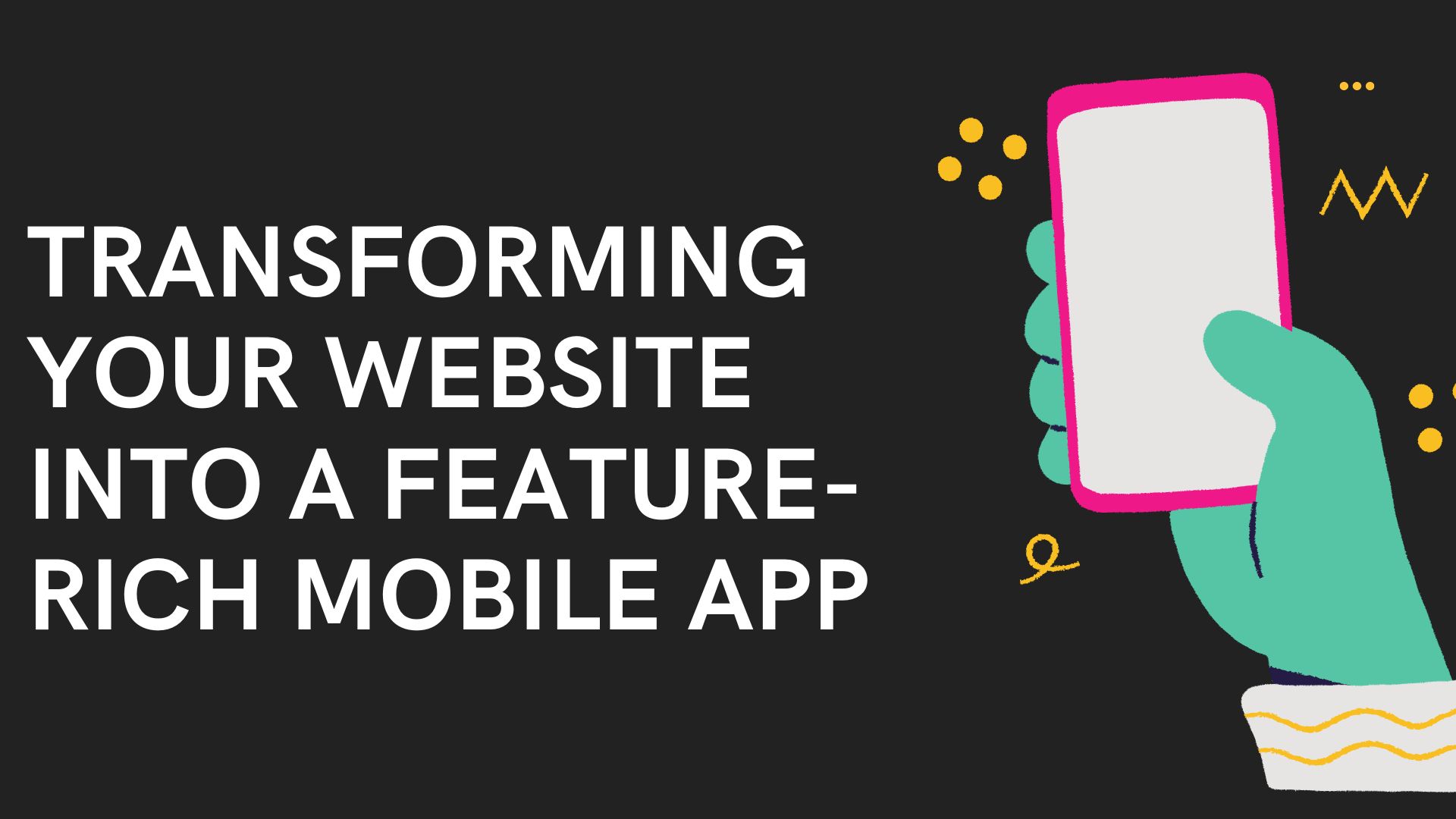In today’s digital landscape, converting your website into a mobile app can significantly enhance your online presence, engage users on a deeper level, and unlock new opportunities for growth.
This detailed guide will take you through the step-by-step process of transforming your website into a feature-rich mobile app we are one of the best mobile app development company in Canada, in this article ensuring a seamless transition and maximizing the app’s potential.
I. Assessing Feasibility and Planning
User Analysis and Research:
Begin by conducting in-depth research to understand your target audience’s mobile usage patterns and preferences.
Analyze data on mobile traffic to your website and identify specific user behaviors, needs, and pain points. This research will help you determine the viability and potential benefits of a mobile app for your business.
Feature Expansion Opportunities:
Explore the possibilities of introducing new features in your mobile app that are not available on your website.
Consider functionalities that leverage the unique capabilities of mobile devices, such as GPS location services, camera integration, push notifications, social sharing, offline access, in-app purchases, or augmented reality. Brainstorm ideas that align with your business goals and cater to your audience’s preferences.
II. Selecting the App Development Approach
Native App Development:
If you prioritize performance, platform-specific features, and optimal user experience, consider native app development. For iOS, you can use Swift or Objective-C, while Java or Kotlin can be used for Android. Native apps offer seamless integration with the respective operating system and allow access to a wide range of device functionalities.
Cross-Platform App Development:
If you aim to reach a broader audience across multiple platforms while minimizing development time and costs, cross-platform frameworks like React Native, Flutter, or Xamarin are viable options.
These frameworks enable you to write code once and deploy it on both iOS and Android platforms, providing a consistent user experience.
Hybrid App Development:
Hybrid app development using frameworks such as Cordova, Ionic, or PhoneGap allows you to leverage web technologies (HTML, CSS, JavaScript) to build a single codebase that runs on multiple platforms. While hybrid apps may have some performance trade-offs, they offer cost-efficiency and code reusability.
III. Adapting UI/UX and Expanding Features
Responsive Design and Mobile Optimization:
Adapt your website’s UI and UX elements to fit the mobile app. Implement responsive design techniques to ensure that your app looks and functions well on various screen sizes and orientations. Optimize visuals, fonts, and layouts to provide an intuitive and user-friendly experience.
Introducing New Features:
Take advantage of the mobile app platform to introduce new features that enhance user engagement and provide unique value.
Consider features like personalized recommendations, social media integration, in-app messaging, gamification elements, offline access, or advanced search capabilities. These additional functionalities will enrich the user experience and differentiate your app from the website.
IV. Data Synchronization and Backend Integration
Assessing Data Requirements:
Evaluate the data synchronization needs between your app and website. Identify the APIs, databases, and data structures that require integration or modification to ensure seamless data flow between the two platforms. Consider user account synchronization, content updates, transaction history, or any other data interactions specific to your business.
Backend Integration:
Implement robust backend systems and APIs to facilitate data synchronization between your app and website. Ensure secure and efficient data transmission, authentication, and authorization processes and use of PCI Compliance is Necessary to protect customer sensitive data. Employ best practices for API design, such as versioning and documentation, to enable smooth integration and future scalability.
V. Testing, Deployment, and Maintenance
Rigorous Testing:
Thoroughly test your mobile app across various devices, platforms, and network conditions. Perform functional testing to ensure all features work as intended, usability testing to gauge the user experience, and performance testing to verify speed, responsiveness, and stability. Continuously iterate and refine based on user feedback and bug reports.
Deployment and Maintenance:
Prepare your app for deployment on app stores by following their guidelines and submission processes. Optimize your app’s metadata, including keyword research, titles, descriptions, and screenshots, to maximize visibility and attract users. After deployment, regularly monitor user feedback, analyze app performance metrics, and release updates to enhance functionality, fix bugs, and address user concerns.
Conclusion:
By following this comprehensive guide, you can successfully transform your website into a feature-rich mobile app. The transition will provide you with the opportunity to engage users on a more intimate level, introduce new functionalities, and expand your online presence.
Embrace the mobile revolution and take your business to new heights by delivering a seamless and immersive app experience to your audience.





 Case studies
Case studies Career
Career